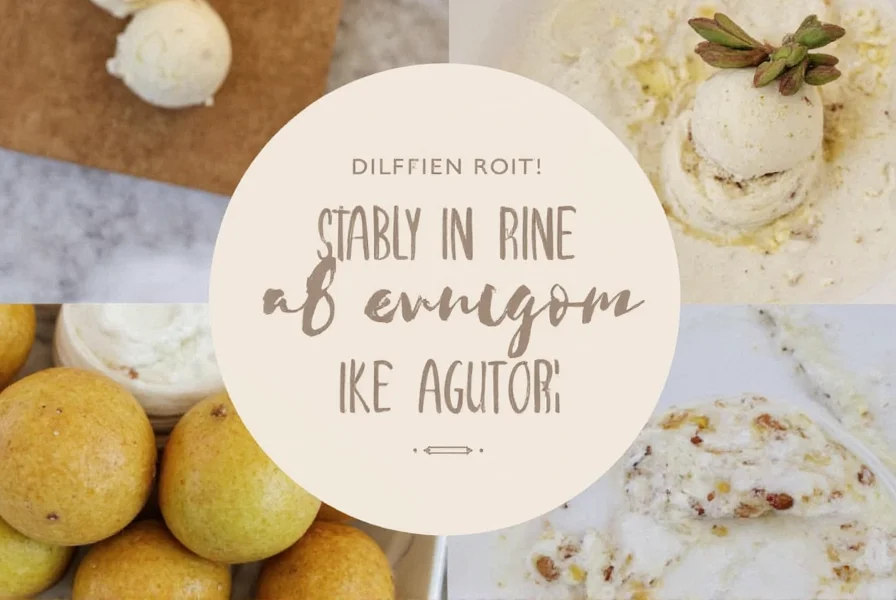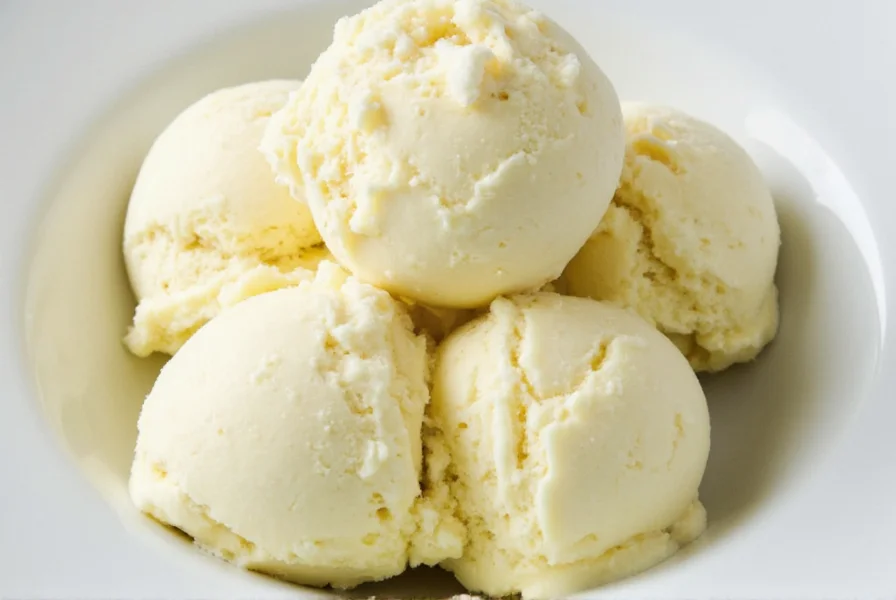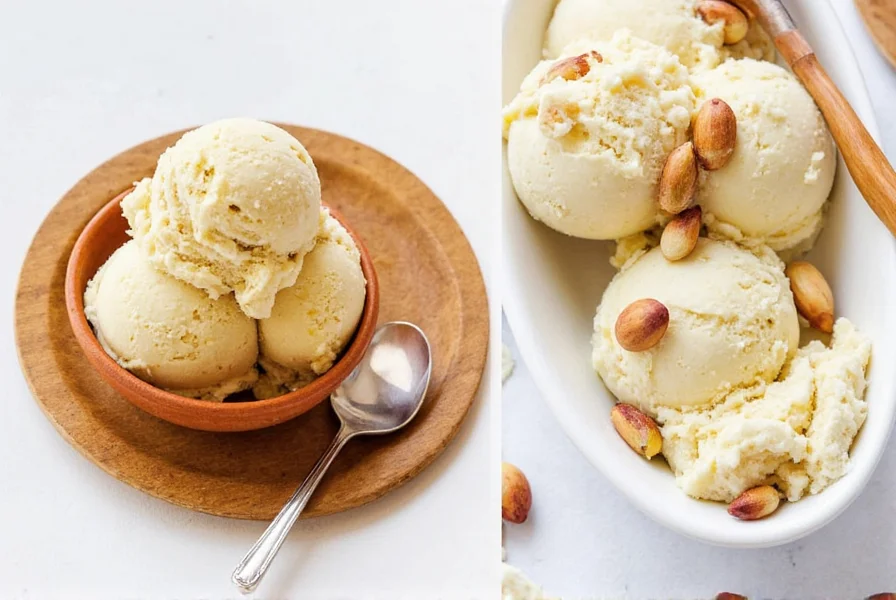Cardamom ice cream represents one of the most sophisticated spice-infused frozen desserts, offering a complex flavor profile that elevates simple ice cream into something extraordinary. Unlike more common vanilla or chocolate varieties, cardamom ice cream delivers a distinctive aromatic experience that has captivated palates across multiple continents for generations.
The Distinctive Flavor Profile of Cardamom in Frozen Desserts
What sets cardamom ice cream apart is its remarkable flavor complexity. When properly prepared, high-quality cardamom imparts three distinct flavor dimensions: a bright citrus top note (reminiscent of lemon and orange), a warm floral middle note, and a subtle peppery finish. This tripartite flavor profile creates a dynamic tasting experience that evolves as the ice cream melts on the palate.
The key to exceptional cardamom ice cream lies in using freshly cracked green cardamom pods rather than pre-ground powder. Whole pods contain volatile essential oils that degrade quickly when ground, which is why artisanal cardamom ice cream makers always crack pods immediately before infusion. The optimal concentration ranges between 1.5-2.5 grams of cardamom per liter of ice cream base – enough to provide distinctive flavor without overwhelming the palate.

Cultural Significance Across Continents
Cardamom ice cream's journey spans multiple culinary traditions, each adapting the spice to local tastes. In the Middle East, particularly Iran and Saudi Arabia, bastani sonnati (traditional Persian ice cream) features cardamom as a primary flavoring alongside rose water and saffron. Scandinavian countries, especially Sweden and Norway, incorporate cardamom into their ice cream traditions as part of their longstanding kardemummabullar (cardamom bun) baking culture.
Indian and Pakistani culinary traditions feature elaichi ice cream, where cardamom complements other traditional flavors like pistachio and saffron. The spice's cooling properties in Ayurvedic medicine made it a natural choice for summer desserts in South Asia. Unlike Western interpretations that often pair cardamom with chocolate or caramel, traditional preparations typically feature it as a standalone flavor to showcase its complexity.
Cardamom Ice Cream Versus Other Spiced Varieties
When comparing cardamom ice cream to other spiced frozen desserts, several key differences emerge. Unlike cinnamon or nutmeg which deliver primarily warm, woody notes, cardamom offers a more complex aromatic profile with its citrus-floral-earthy balance. This makes cardamom ice cream particularly versatile for pairing with both sweet and savory elements.
| Spice | Flavor Profile | Best Pairings | Cultural Origin |
|---|---|---|---|
| Cardamom | Citrusy, floral, slightly peppery | Rose water, pistachio, mango, dark chocolate | Middle Eastern, Scandinavian, South Asian |
| Cinnamon | Warm, woody, sweet | Apple, pear, caramel, pecan | Mexican, American, Chinese |
| Nutmeg | Earthy, warm, slightly sweet | Pumpkin, sweet potato, eggnog | European, Caribbean |
Perfect Pairings and Serving Recommendations
To fully appreciate cardamom ice cream's nuanced flavor, consider these expert pairing suggestions. The citrus notes in cardamom complement fresh stone fruits like apricots and peaches exceptionally well. For a traditional Middle Eastern experience, serve cardamom ice cream alongside Persian love cake or with a drizzle of date syrup.
Temperature matters significantly with cardamom ice cream. Allow it to temper at room temperature for 3-5 minutes before serving to let the complex aromatics fully develop. The ideal serving temperature (around 8°F or -13°C) allows the volatile cardamom oils to express their full flavor profile without becoming overwhelming.
For an elevated experience, try cardamom ice cream with complementary textures: a sprinkle of crushed pistachios adds nuttiness and crunch, while a delicate shard of halva provides a sweet, crumbly contrast that enhances the cardamom's floral notes. Coffee lovers will appreciate that cardamom ice cream serves as an excellent accompaniment to strong Arabic or Turkish coffee, creating a balanced flavor experience where the spice cuts through the coffee's bitterness.

Why Cardamom Works Exceptionally Well in Ice Cream
The science behind cardamom's success in frozen desserts lies in its chemical composition. Cardamom's primary flavor compound, 1,8-cineole, has a relatively high freezing point compared to other spice compounds, which means it remains more volatile and aromatic even at ice cream temperatures. This explains why cardamom maintains its distinctive flavor profile when frozen, while many other spices become muted.
Additionally, cardamom's natural cooling properties (recognized in traditional medicine systems) create a fascinating sensory contrast with the cold temperature of ice cream. This dual cooling effect – physical from the frozen dessert and physiological from the spice – creates a uniquely refreshing experience that makes cardamom ice cream particularly appealing in warm climates.
Frequently Asked Questions
What does cardamom ice cream taste like compared to regular vanilla?
Cardamom ice cream offers a complex flavor profile with bright citrus top notes, warm floral middle notes, and a subtle peppery finish, creating a more dynamic tasting experience than vanilla. While vanilla provides a sweet, creamy base note, cardamom adds aromatic complexity that evolves as the ice cream melts, with distinctive lemony and floral characteristics that vanilla lacks.
Is cardamom ice cream common in any particular country's cuisine?
Cardamom ice cream features prominently in several culinary traditions: in Iran as part of bastani sonnati (often combined with rose water and saffron), in Scandinavian countries where cardamom is a staple baking spice, and throughout South Asia as elaichi ice cream. Each region has developed its own distinctive preparation methods and serving traditions for this aromatic frozen dessert.
Can I make cardamom ice cream without an ice cream maker?
Yes, you can make cardamom ice cream without an ice cream maker using the 'no-churn' method. Combine heavy cream, sweetened condensed milk, and freshly cracked cardamom seeds. Whip the cream to stiff peaks, fold in the other ingredients, pour into a container, and freeze. For best flavor, infuse the cream with cardamom pods overnight before making the ice cream. Stir the mixture every 30 minutes during the first 2-3 hours of freezing to prevent large ice crystals from forming.
Does cardamom ice cream contain actual cardamom pods?
Traditional cardamom ice cream recipes use whole green cardamom pods that are cracked and steeped in the ice cream base, then removed before churning. High-quality versions never contain actual pod fragments, as these would create unpleasant texture. The flavor comes from the essential oils extracted during the steeping process. Some commercial versions may use cardamom extract or ground cardamom, but these generally produce less complex flavor than freshly cracked pods.











 浙公网安备
33010002000092号
浙公网安备
33010002000092号 浙B2-20120091-4
浙B2-20120091-4